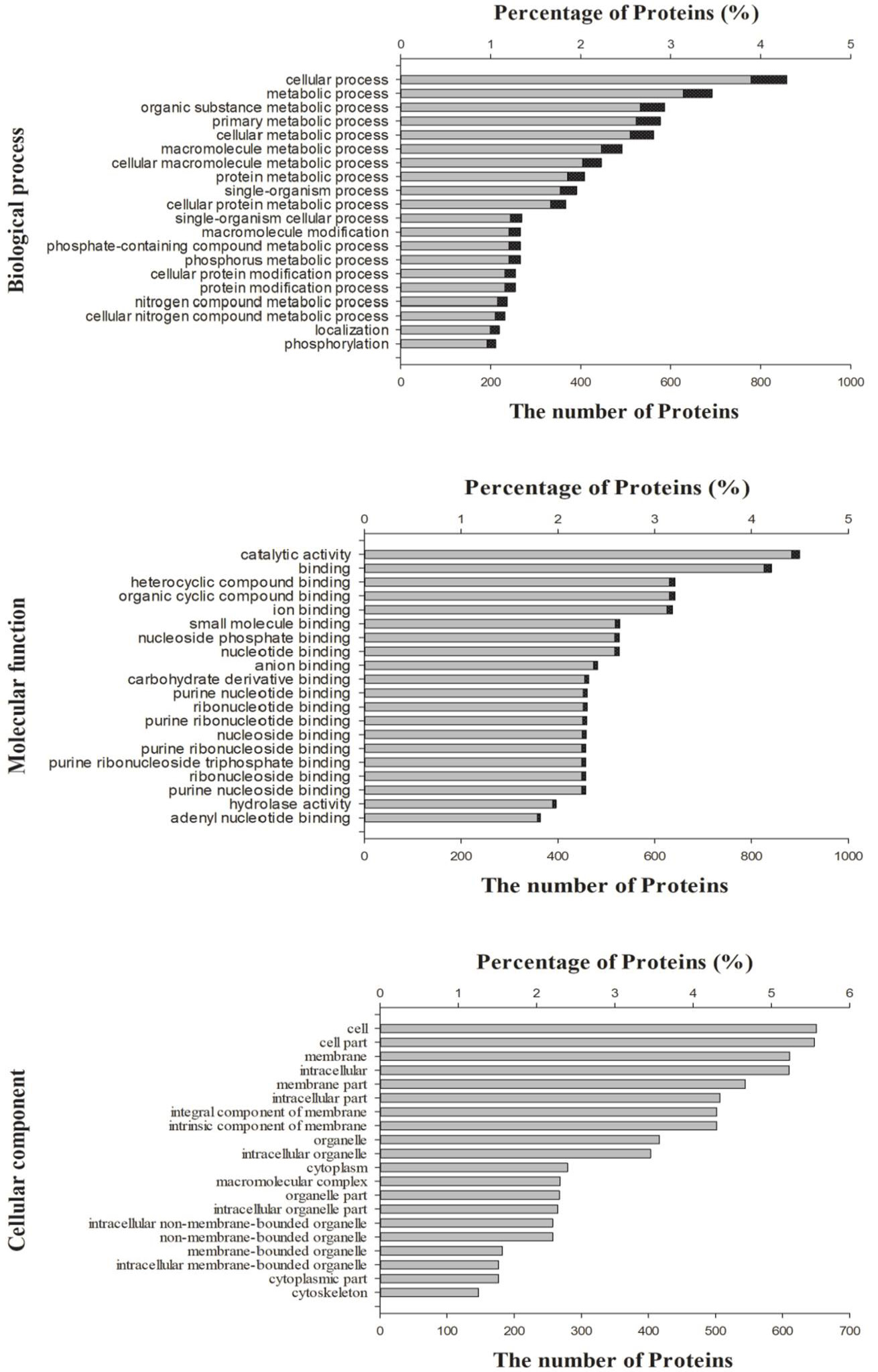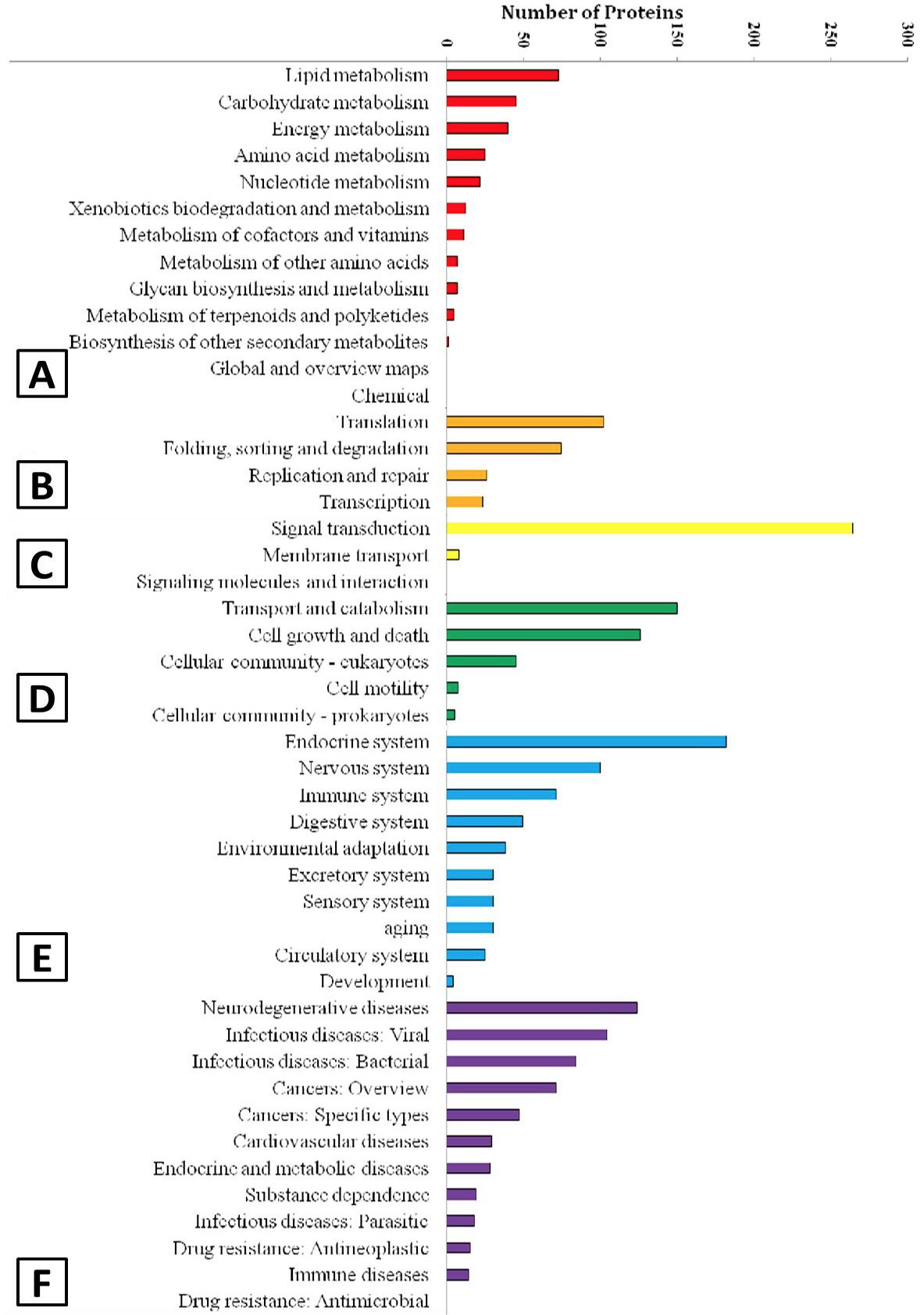Proteomic Analysis by Shotgun LC-MS/MS of Cyst Wall Protein Components From the Protozoan Parasite Cryptocaryon irritans, the Causative Agent of White Spot Disease in Marine Fish
Proteomic Analysis by Shotgun LC-MS/MS of Cyst Wall Protein Components From the Protozoan Parasite Cryptocaryon irritans, the Causative Agent of White Spot Disease in Marine Fish
Honghua Wang1,2, Summia Perveen1,2, Shucheng Shao1,2, Kun Wang1,2 and Fei Yin1,2,*
Cyst wall of Cryptocaryon irritans viewed by an optical microscope (A, B), SEM (C), and TEM (D). A, a holistic view of empty cyst walls; B, partial view of empty cyst walls; C, cyst wall stripped off in SEM sample preparation, showing the multi-layer structure of the thick cyst wall; D, sectional view of the cyst wall. ECWs represent empty cyst wall. Arrows indicate the inner surface of cyst wall, and Arrowheads indicate the outer surface of the cyst wall. Scale bars = 500 μm (A), 10 μm (B), 10 μm (C), and 1 μm (D).
Distributions of molecular mass (MW) for cyst wall of Cryptocaryon irritans by the shotgun LC-MS/MS approach.
Distributions of isoelectric point (pI) for cyst wall of Cryptocaryon irritans by the shotgun LC-MS/MS approach.
GO categories of Cryptocaryon irritans cyst wall proteins. These terms were summarized into 2167 sub-categories under 3 GO terms. Bar charts represented the top 20 sub-categories of the biological process (BP) category, cellular component (CC) category, and molecular function (MF) category, respectively. Grey bars showed the number of proteins, the black bars indicated the percentage of proteins.
KEGG categories of Cryptocaryon irritans cyst wall proteins. A total of 2,190 proteins were annotated by KEGG and classified into 6 categories with 47 subclasses. The upper cases represent the title of 6 categories. A, metabolism; B, genetic information processing; C, environmental information processing; D, cellular processes; E, organismal systems; F, human diseases.
Proteomic Analysis by Shotgun LC-MS/MS of Cyst Wall Protein Components From the Protozoan Parasite Cryptocaryon irritans, the Causative Agent of White Spot Disease in Marine Fish
















